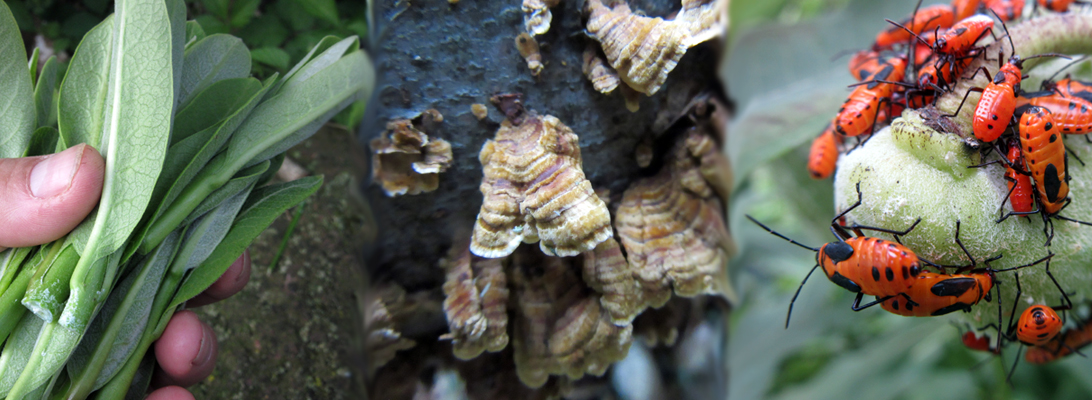So this past week turned out to be a pretty good one for mushroom hunting as well as foraging.
In terms of plants, I gathered a lot of stinging nettle (Urtica dioica) to dry for future use, some wood nettle (Laportea canadensis), Violet (Viola spp.), ostrich fern (Matteuccia struthiopteris), broad leaf dock (Rumex obtusifolius), chickweed (Stellaria media), purple deadnettle (Lamium purpureum), and common plantain (Plantago major).
I also gathered 4 different varieties of mushrooms (3 of those varieties were different types of morels). This is my 3rd year hunting morels, if you want to read about my 1st and 2nd years check it out here and here.
If you are interested in hunting morels, Michael Kuo’s books 100 Edible Mushrooms and Morels are a good place to start. Also check out his excellent website here.

I have been working on a plant DVD, and on Thursday morning I had just finished filming and was about to head out of the woods to go pick my son up from preschool, when I almost stepped on the morel pictured above. I was excited and a little surprised because I had never found black morels (Morchella angusticeps) before (previous years I have only ever found the small yellow variety [Morchella diminutiva]), and I was in a part of the woods that I travel on a regular basis.
It was somewhat damaged, so I decide to have a quick look around.

A couple feet away, I found this even more damaged one.

And then within a few more feet I found 3 more black morels in great condition.

About 20 feet up the trail I found a few of these smaller morels, which I at first took for younger black morels. Upon further inspection they turned out to be half-free morels (Morchella punctipes). All morels should be carefully identified, but the half-free ones are the trickiest because they look a lot like one variety of verpa (Verpa bohemica). Verpas are of disputed edibility, and should not be collected.
Anyway, it was time to pick up my son, so I headed out of the woods without harvesting any.

After picking up my son, I told him that I told him that I had a surprise for him in the woods. He asked me “is it mushrooms?” and I told him he would have to wait to see. I helped him spot the morels, and together we harvested the ones pictured above. The 4 in the middle are black morels and the 2 to either side are half-free morels.
As a side note I should say that while I take my 4 1/2 yr old son mushroom hunting with me, I don’t know anyone else kids well enough to know at what age they are ready for it. 4 1/2 is surely on the young side, but I trust him, and he knows that not only are there deadly toxic mushrooms, but that we only eat the edible ones after cleaning and cooking them at home.
On Friday we went back to the same spot with two friends and found a few more of the half-free morels but none of the black ones.

On Saturday we got together with a couple other families to go foraging along a creek near the Susquehanna. Our primary interest was in harvesting stinging nettle, but earlier in the week I had seen a dryad’s saddle mushroom (Polyporus squamosus) growing on a log along the trail, and figured I could introduce my friends to this common mushroom.
Not only did I introduce them to dryad’s saddles, but they turned out to be even better mushroom spotters than I am.
We found them growing on several logs and one big old tree.

They were even growing inside the tree.
Click here to see a short video of my friend gathering them from the hole in the tree.

We ended up with about 20 medium to small caps (the large ones are often too tough to eat) to split between our 3 families. We could have had more, but decided to leave some for other people.

On Sunday afternoon my son and I decided to go skateboarding and hang out in the woods for a little. I figured it couldn’t hurt to check one of my morel spots from last year. I wasn’t expecting to find any, because it seemed like it was still a little early for the small yellow morels, but we found a nice little handful of them. Small yellows are supposed to be the best tasting of the morels and sauteing them seemed like a good close to a great week of wild food.
Thanks for reading,
Nate






























